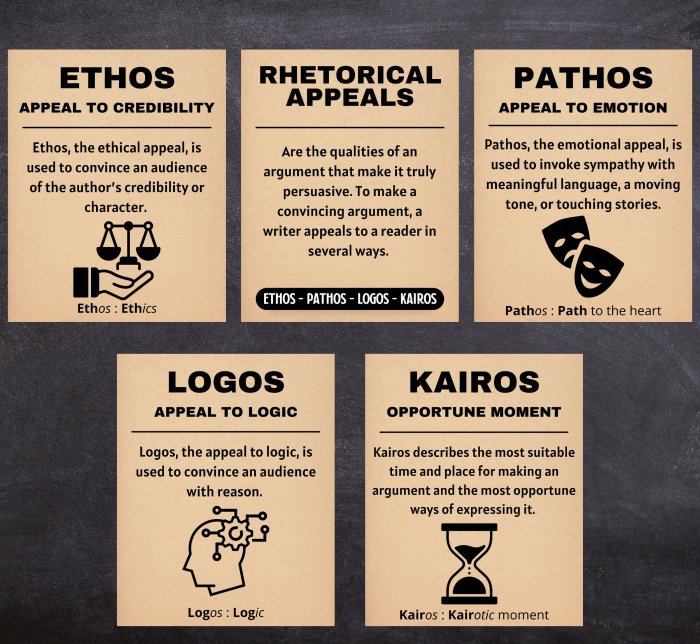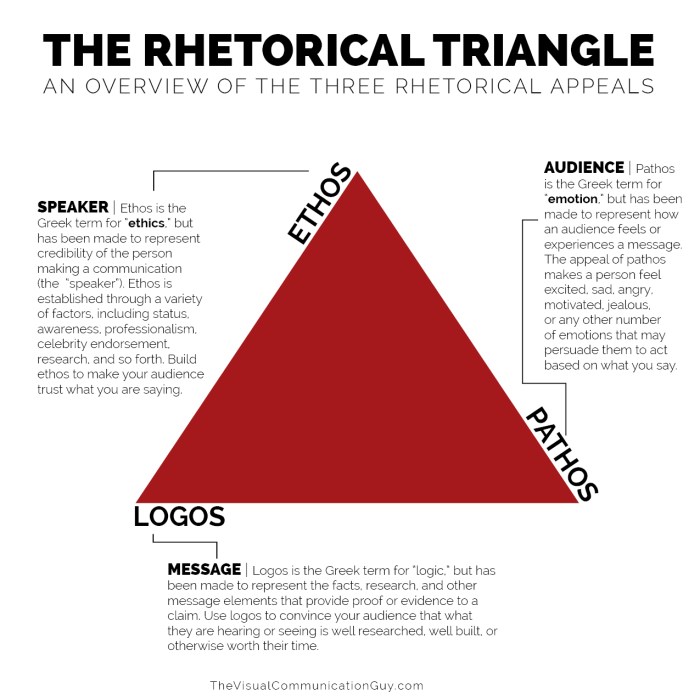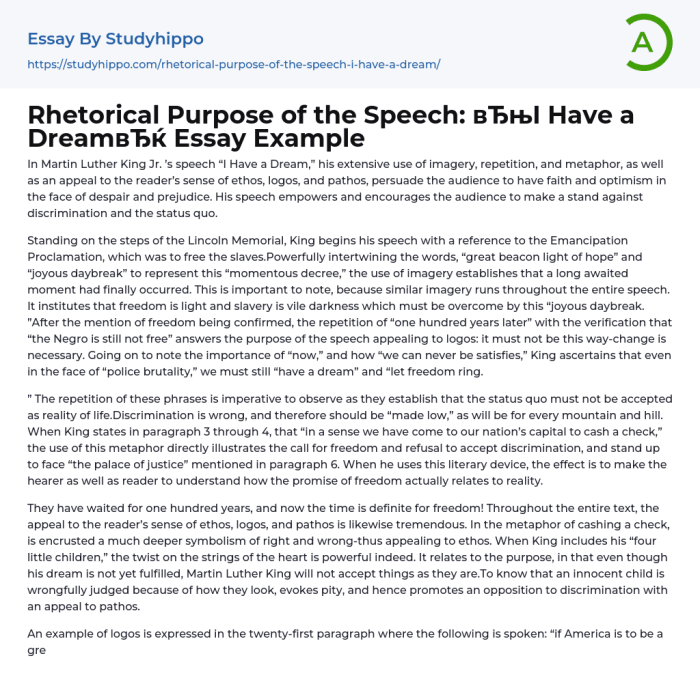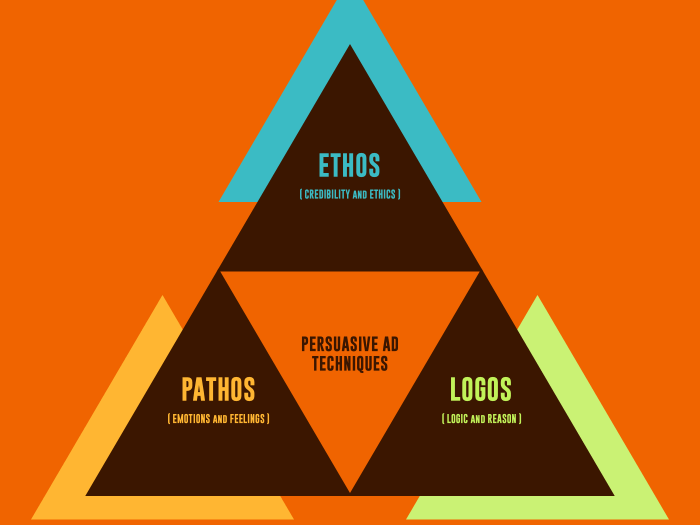I have a dream speech logos pathos ethos – Martin Luther King Jr.’s “I Have a Dream” speech, delivered at the March on Washington for Jobs and Freedom in 1963, is widely regarded as one of the most influential speeches in American history. King’s powerful use of logos, pathos, and ethos captivated the nation and helped galvanize the Civil Rights Movement.
In this essay, we will explore the rhetorical devices employed by King in his speech, examining how he used logic, emotion, and credibility to persuade his audience and advance his cause.
Logos in “I Have a Dream” Speech

In his iconic “I Have a Dream” speech, Martin Luther King Jr. employs logos, the use of logical reasoning and evidence, to bolster his arguments for racial equality.
King draws upon historical events, such as the signing of the Declaration of Independence and the Emancipation Proclamation, to support his claim that all Americans, regardless of race, are entitled to the same rights and freedoms. He also cites statistics and data to demonstrate the persistent disparities faced by African Americans in areas such as education, employment, and housing.
Pathos in “I Have a Dream” Speech

King’s speech is renowned for its emotional appeal, which he achieves through the use of pathos, the ability to evoke emotions in an audience.
He employs vivid imagery and metaphors to paint a vivid picture of the injustices faced by African Americans, such as the “sweltering heat of oppression” and the “chains of segregation.” King also uses personal anecdotes and stories to connect with his audience on a human level, making his arguments more relatable and impactful.
Ethos in “I Have a Dream” Speech

King establishes his credibility and authority through ethos, the use of evidence and appeals to character.
As a renowned civil rights leader and minister, King had a proven track record of advocating for racial equality and nonviolent resistance. He also cites the teachings of Jesus Christ and Mahatma Gandhi to support his arguments, demonstrating his deep understanding of ethical principles and moral values.
Impact of Rhetorical Devices: I Have A Dream Speech Logos Pathos Ethos
| Rhetorical Device | Effect | Example |
|---|---|---|
| Metaphor | Creates vivid imagery and emotional impact | “The sweltering heat of oppression” |
| Anaphora | Emphasizes key points and builds momentum | “I have a dream… I have a dream… I have a dream…” |
| Parallelism | Creates a sense of rhythm and balance | “With this faith, we will be able to hew out of the mountain of despair a stone of hope.” |
Structure and Organization
King’s speech is meticulously structured and organized, with a clear introduction, body, and conclusion.
Introduction:Sets the stage by describing the significance of the March on Washington and the Declaration of Independence.
Body:Artikels the injustices faced by African Americans and presents King’s vision for a more just and equitable society.
Conclusion:Urges the audience to embrace hope and nonviolent resistance, and ends with the iconic words, “I have a dream.”
Historical Context

The “I Have a Dream” speech was delivered on August 28, 1963, at the Lincoln Memorial in Washington, D.C., during the March on Washington for Jobs and Freedom.
The speech was a pivotal moment in the Civil Rights Movement, galvanizing the nation and inspiring countless people to join the fight for racial equality. It remains one of the most iconic and influential speeches in American history.
Key Questions Answered
What is the main argument of King’s “I Have a Dream” speech?
King’s main argument is that racial segregation and discrimination are morally wrong and must be abolished. He calls for an end to violence and hatred and urges Americans to work together to create a more just and equitable society.
How does King use logos in his speech?
King uses logos by providing logical arguments and evidence to support his claims. For example, he cites the Declaration of Independence and the Constitution to argue that all Americans are entitled to equal rights.
How does King use pathos in his speech?
King uses pathos by appealing to the emotions of his audience. He describes the horrors of racial discrimination and the suffering it has caused. He also uses vivid imagery and personal anecdotes to connect with his audience on a personal level.
How does King use ethos in his speech?
King uses ethos by establishing his credibility and authority. He refers to his own experiences as a civil rights leader and cites the support of other respected leaders. He also uses his position as a minister to lend moral weight to his arguments.